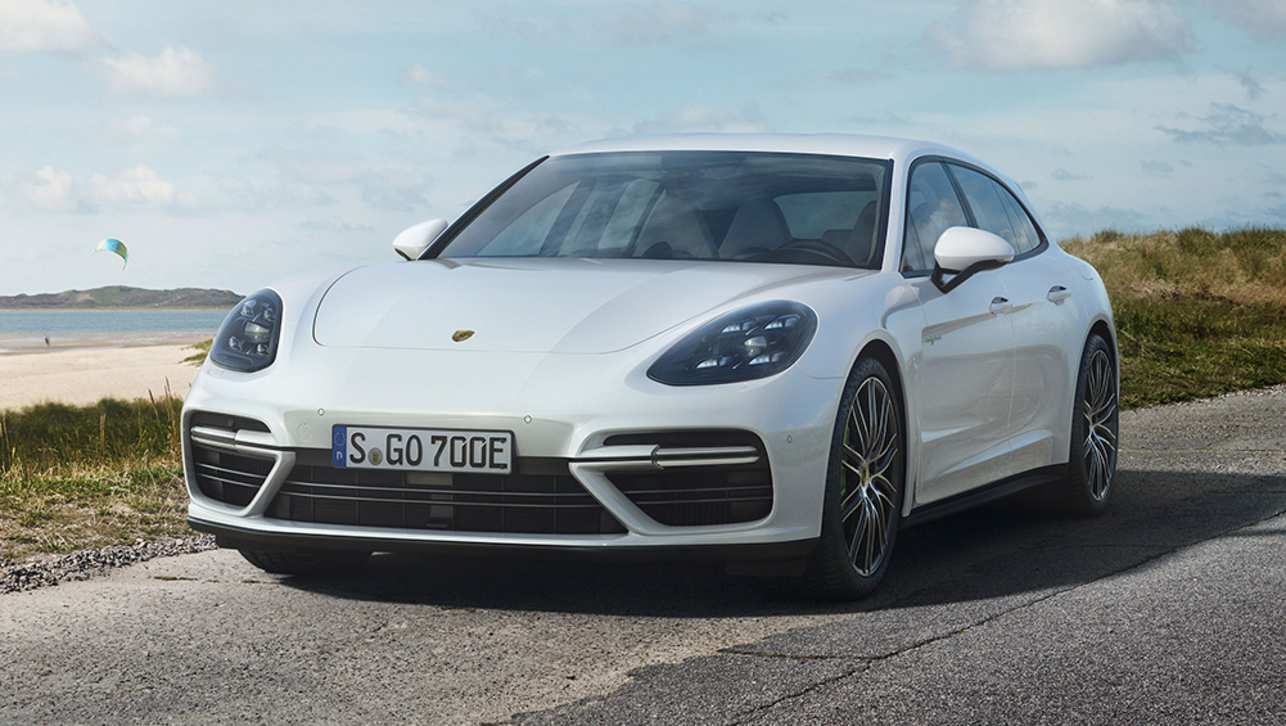While Porsche made waves in the past 24 hours with the launch of the second-generation Panamera’s facelift, it’s not done just yet, with more grades of the upper-large sedan to debut soon, including the returning Turbo S E-Hybrid performance flagship.
Speaking to Australian journalists today, Porsche’s vice-president of Panamera product line, Thomas Friemuth, promised “there will be more (grades) to come” within about a month, all of which will be familiar, such as the Turbo S E-Hybrid plug-in hybrid (PHEV).
“In the future, we will have three hybrids … (including) the base (4 E-Hybrid), and the Turbo S E-Hybrid as the flagship,” he said.
As reported, the first facelifted PHEV to be revealed was the new 4S E-Hybrid, which is the third low-emissions grade in the Panamera’s line-up, having joined the 4 E-Hybrid and Turbo S E-Hybrid, both of which were previously sold in Australia.
However, upon the facelift’s reveal, most of the focus was on the new Turbo S, which succeeds the Turbo as the Panamera’s most powerful grade without electrification.
While the Turbo produced 404kW/770Nm from a 4.0-litre twin-turbo V8 petrol engine, the Turbo S uses the same unit but ups the ante to 463kW/820Nm.
These output increases help the Turbo S sprint from a standstill to 100km/h in a supercar-like 3.1 seconds while on the way to its top speed of 315km/h. Compared to the Turbo, it’s 0.7s quicker and 9km/h faster.
But more importantly, the Turbo S is 0.3s quicker and 5km/h faster than old Turbo S E-Hybrid, which added a 100kW electric motor to the Turbo’s 4.0-litre twin-turbo V8 petrol engine to develop combined outputs of 500kW/850Nm.
Despite its power and torque deficits, the Turbo S is the stronger performer in a straight line, so it’s logical to assume the Turbo S E-Hybrid will be back with a vengeance, right? Thankfully, Mr Friemuth agrees.
“I can’t say because we haven’t announced it yet, but be sure that we will increase the main data,” he said. “This will be a nice car to drive.”
Mr Friemuth later added that there will be no changes to the Turbo S E-Hybrid’s electric motor, with its output improvements to be delivered by the 4.0-litre twin-turbo V8 petrol engine, which could potentially be tuned to the same level as that of the Turbo S.
For what it’s worth, though, he said the Turbo S will still be more accomplished than the Turbo S E-Hybrid on most racetracks, with it paying a significant weight penalty for being a PHEV.
Either way, expect the Turbo S E-Hybrid – and the 4 E-Hybrid – to feature the 4S E-Hybrid’s new 17.9kWh lithium-ion battery, which is 3.8kWh larger than that of the Panamera’s old PHEVs and will therefore increase electric-only driving range.
For reference, the new 4 E-Hybrid is expected to carry over its predecessor’s powertrain (a 2.9-litre twin-turbo V6 petrol engine with an electric motor), which was a lower-output version (340kW/700Nm) of what’s now in the 4S E-Hybrid (412kW/750Nm).
All of the aforementioned grades are mated to an eight-speed PDK dual-clutch automatic transmission and an all-wheel-drive system.


.jpg)
.jpg)
.jpg)


.jpg)


.jpg)



.jpg)
.jpg)

.jpg)



.jpg)
.jpg)

.jpg)
.jpg)



.jpg)
Comments